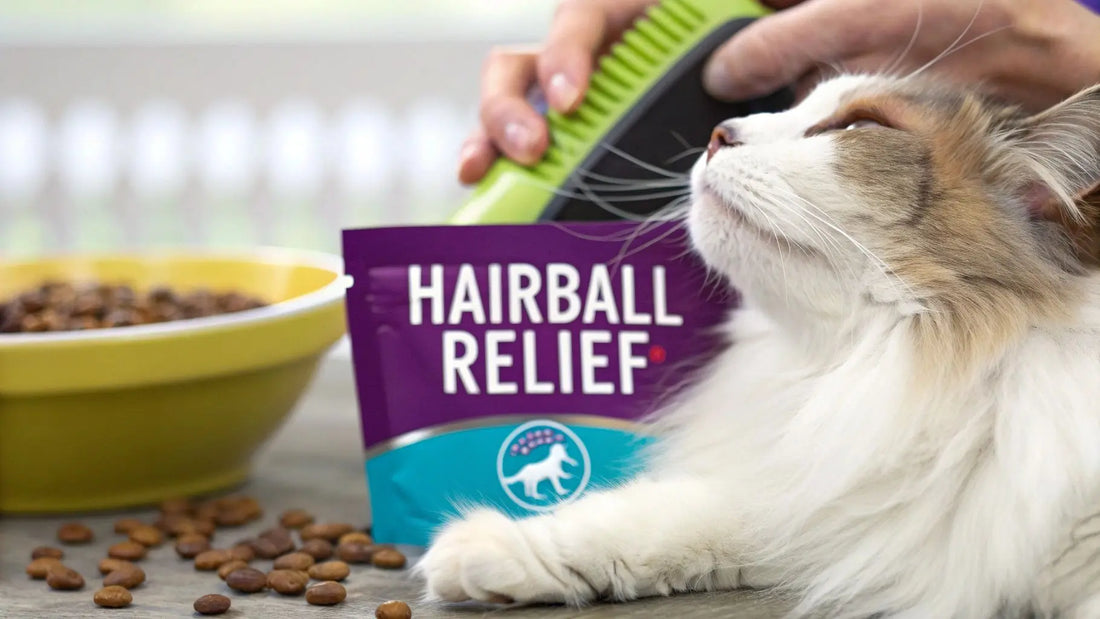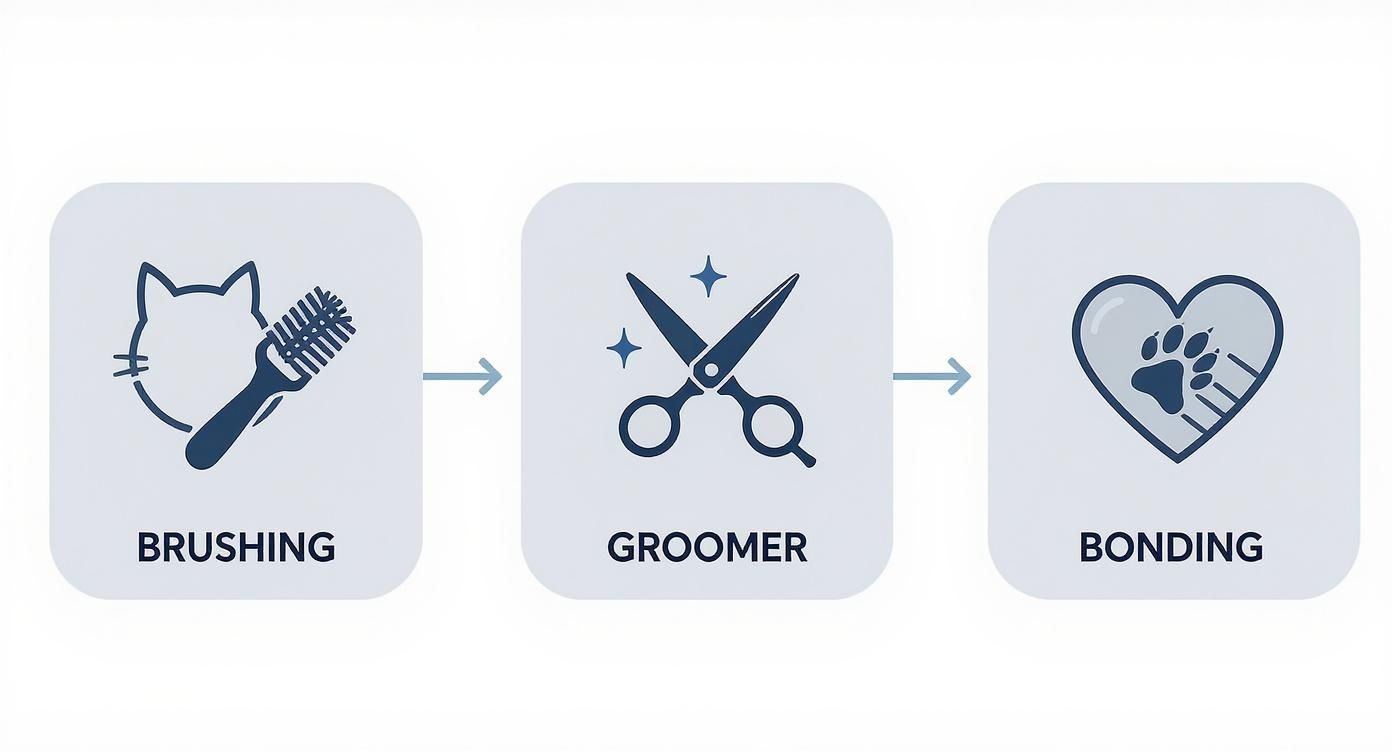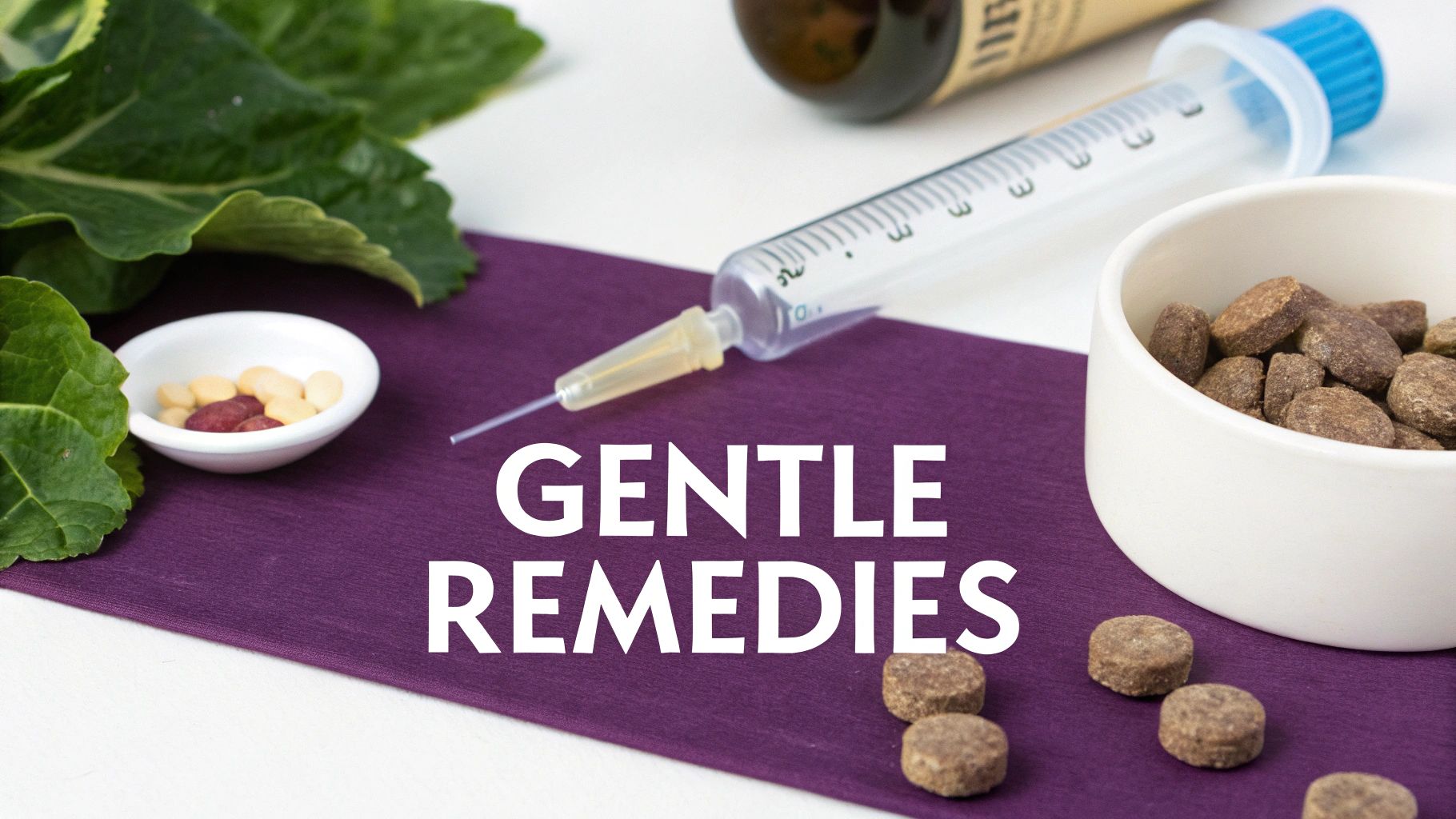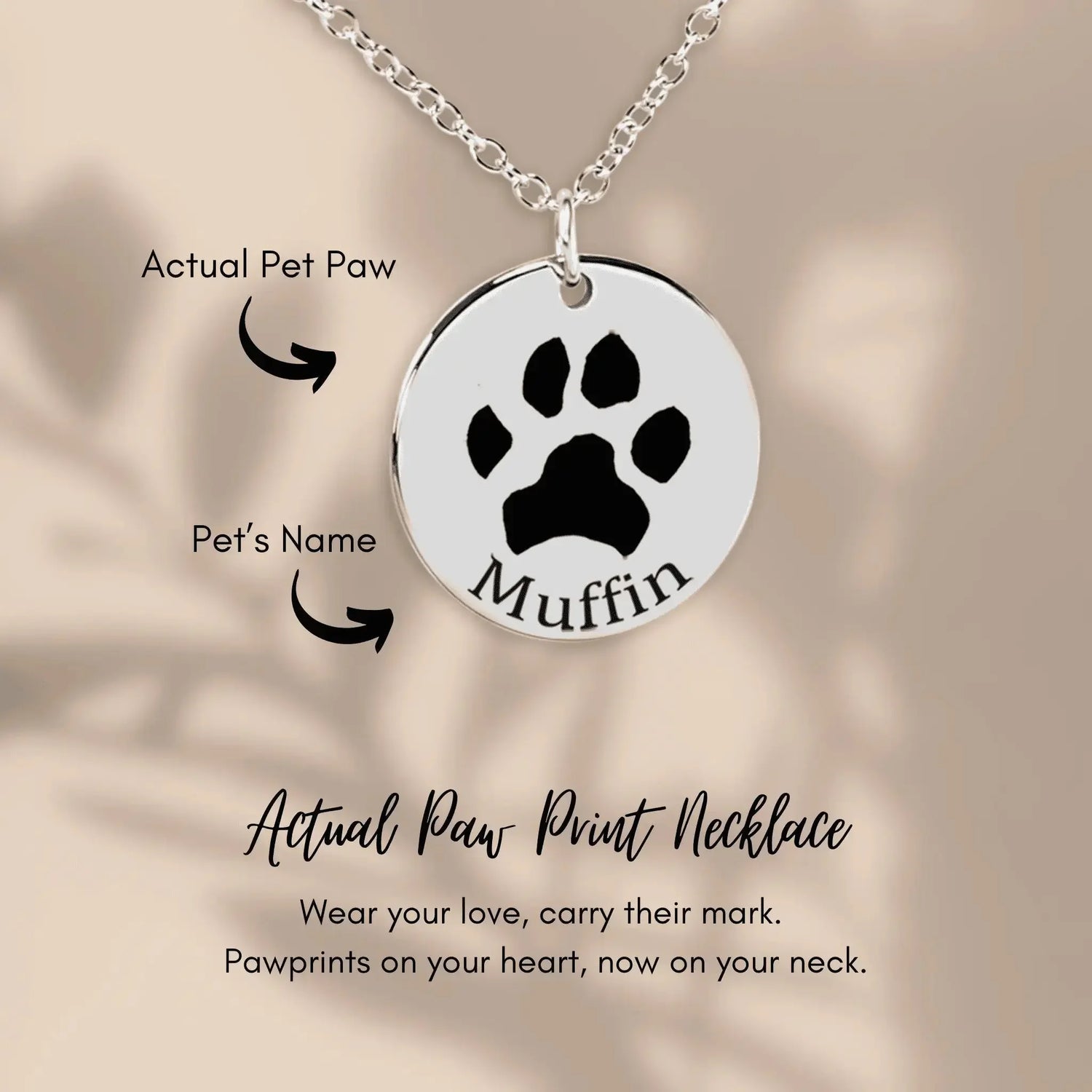Purr-fect Cat Hairball Remedies That Actually Work 🐾

You know the sound. That awful, gut-wrenching "hack-hack-ack" that sends you scrambling for a paper towel. Every cat parent has been there! 🙀 The good news is that the best cat hairball remedies are usually a simple mix of proactive grooming, dietary tweaks, and sometimes a little extra lubrication to help things… slide along.
With a few easy adjustments from Floofie, our hairball-hating mascot, you can make those yucky moments a rarity instead of a regular cleanup chore.
What Are Hairballs Anyway?

Let's get one thing straight: that gross little tube your cat just left on the rug isn't a sign they're being naughty. Our mascot, Floofie, wants you to know it’s just part of being a fabulous feline!
The fancy science name is a "trichobezoar" (good luck saying that five times fast 😹), and it’s a totally natural, if unpleasant, side effect of your cat's very meticulous grooming habits.
When your cat licks their coat, their tongue—covered in tiny, backward-facing barbs—acts like a perfect little comb, snagging all the loose and dead hair. Most of this fur travels right through their digestive system and ends up in the litter box, no problem.
But sometimes, especially when they're shedding a lot, that hair can collect in the stomach and form a soggy, tangled clump. This irritates their tummy, and their body’s natural reaction is to get it out. So, all that dramatic hacking is just your cat's system doing exactly what it's supposed to do!
Why Some Cats Get More Hairballs
You might notice one of your cats is a hairball machine while the other rarely has an issue. That's totally normal. Some felines are just more prone to them for a few key reasons:
- Long-Haired Legends: It's simple math, fur-iend. Breeds like Persians, Ragdolls, and Maine Coons have a ton of glorious fur, which means more of it ends up in their tummies.
- Excessive Groomers: Cats who are bored, stressed, or dealing with itchy skin allergies might groom themselves compulsively, swallowing way more hair than usual.
- Digestive Woes: If your cat's digestive system is a bit sluggish, hair doesn't pass through as quickly. This gives it more time to clump up in the stomach instead of moving along.
Knowing why your cat is prone to hairballs is the first step toward finding the right solution. For a broader look at feline wellness, you can explore some excellent general cat health resources.
Floofie’s Tip: A hairball every week or two isn't usually a cause for alarm. But if your cat is hacking frequently, seems distressed, or isn't producing anything, it could signal a bigger problem. Always pay close attention!
And you're not alone in dealing with this. The global market for cat hairball remedies was valued at a whopping USD 606 million in 2025 and is projected to hit USD 1.36 billion by 2034. Clearly, we're all looking for solutions! For more great advice on cat ownership, don't miss our essential cat care tips for beginners.
Floofie's Quick Guide to Hairball Help
Here's a quick look at the most effective strategies we'll cover to help you manage your cat's hairballs.
| Remedy Type | How It Helps | Best For |
|---|---|---|
| Grooming | Removes loose fur before your cat can swallow it. | All cats, especially long-haired breeds and those in shedding season. |
| Dietary Fiber | Helps move hair through the digestive tract smoothly. | Cats with frequent hairballs or sluggish digestion. |
| Lubricants | Coats the hair to help it pass easily instead of clumping. | Cats needing occasional, immediate relief. |
| Hydration | Keeps the digestive system running smoothly to prevent blockages. | Every cat! Especially those on a dry food diet. |
These are the core pillars of hairball management. Now, let's get into the specifics of how to put them into action.
Mastering Proactive Grooming Techniques
Want to stop those yucky hairballs before they even start? Your number one weapon is a good brush! 💖
Consistent grooming is the single most powerful and proactive way to reduce the amount of loose fur your kitty swallows. Think of every single hair you brush out as one less hair that could end up in a soggy mess on your favorite rug.
But let's be real—not just any old brush will do, and some cats act like the brush is a tiny, spiky monster. Floofie gets it! The trick is to turn grooming from a wrestling match into a special bonding moment that you both actually look forward to. It's totally possible, we promise!
Choosing Your Hairball-Busting Tools
The right tool makes all the difference. Seriously. Using a brush that’s wrong for your cat's coat can be uncomfortable for them and completely ineffective for you. It's like trying to comb your own hair with a fork!
- For Shorthaired Sweeties: Cats with short, dense fur do great with rubber curry brushes or grooming mitts. Our Pet Hair Remover Mitt is awesome because it feels just like you’re petting them. They feel loved while you sneakily remove tons of loose fur.
- For Long-Haired Legends: Fluffy friends like our mascot Floofie need more heavy-duty help. An undercoat rake is essential for reaching deep down to remove the loose, fluffy undercoat where hairballs are born. A slicker brush is also great for detangling and smoothing their top coat.
For a complete breakdown, check out our guide on the best cat grooming tools for long-haired cats, which has everything you need to know.
Making Brushing a Purr-fectly Fun Time
Now for the fun part! How do you get a skeptical cat to love their personal spa day? You make it a game filled with love and treats. 😻
Start with super short sessions, just a few minutes at a time, and always end on a positive note. Use a playful, happy voice and offer a high-value treat right after.
Find their favorite "scritchy" spots—many cats absolutely love being brushed around their cheeks and under their chin. Brushing these areas first helps them associate the brush with feeling good.
Floofie’s Pro Tip: Never, ever try to brush your cat when they are feeling feisty or stressed. Wait until they are calm and relaxed, maybe after a nice nap. This helps them see grooming as a soothing activity, not a battle.
When to Call in the Professionals
Sometimes, a professional groomer is a fantastic cat hairball remedy, especially with long-haired breeds prone to serious matting. They have the skills and tools to safely remove tough mats that you just can't tackle at home.
Think of it as a deep clean every few months. A "lion cut" shave during peak shedding season can dramatically reduce hair ingestion and keep your kitty comfortable and cool. This isn't just for looks; it's a health strategy that can make a huge difference in preventing dangerous blockages.
Fighting Hairballs from the Inside Out
What if one of the best cat hairball remedies was already hiding in your kitty's dinner bowl? Surprise, it is! 😻 Your cat's diet plays a gigantic role in their digestive health and their ability to pass ingested fur smoothly.
Proper nutrition can turn your cat’s digestive system into a well-oiled, hair-moving machine. Let's chew over some delicious and effective dietary solutions to make those yucky hairball surprises a thing of the past.
The Power of Fiber in Your Cat's Food
Think of fiber as the superstar ingredient for hairball control. High-fiber cat foods are specially formulated with ingredients like beet pulp or cellulose that help prevent swallowed hair from clumping up into a solid mass in the stomach.
Instead, the fiber helps move everything along the digestive superhighway, so it exits the natural way—in the litter box! This is a much more comfortable solution for your cat than those dramatic hacking episodes we all know and dread.
Floofie’s Food for Thought: When switching foods, always do it slowly! Mix a little of the new food in with the old, gradually increasing the amount over 7-10 days. This helps prevent tummy upsets and lets your picky eater adjust to the new taste.
Beyond just grooming, certain dietary strategies for managing shedding can also offer valuable insights into how nutrition impacts coat health and, in turn, hairball prevention.
Don't Forget the Hydration Station
Water is nature's perfect lubricant! A well-hydrated cat has a much smoother-running digestive system, which is absolutely essential for preventing hairballs from forming in the first place.
If your cat primarily eats dry kibble, paying attention to their water intake is extra important. Many cats are notoriously poor drinkers and often prefer moving water over a stagnant bowl. A simple cat water fountain can be a total game-changer, encouraging them to drink more throughout the day. More water means a healthier gut and fewer hairball blockages.
The market for these solutions is booming, showing just how many pet parents are looking for answers. You'll find everything from oral gels like Floofie's Fave Hairball Gel, dietary supplements, yummy Purrfect Passage Soft Chews, and specialized hairball control cat foods, all available through vet clinics and online stores.
This infographic summarizes the proactive grooming steps that work hand-in-hand with a good diet.

As the visual highlights, regular brushing, professional grooming, and the bonding that comes with it are all part of a complete hairball prevention strategy.
Let's compare different food-based strategies to manage your cat's hairballs and find the best fit.
Comparing Dietary Hairball Solutions
| Dietary Approach | Primary Benefit | Considerations |
|---|---|---|
| High-Fiber Kibble | Helps move hair through the digestive tract. | Must be introduced slowly to avoid digestive upset. |
| Wet Food | Increases hydration, lubricating the system. | Can be more expensive; some cats are picky. |
| Natural Supplements | Adds targeted fiber or oils for smoother passage. | Requires consistency; check ingredients with your vet. |
| Pumpkin Puree | A natural and gentle source of fiber and moisture. | Use plain pumpkin, not pie filling. Start with a small amount. |
Ultimately, the best approach often combines a couple of these strategies. A high-fiber diet paired with plenty of water from wet food or a fountain can make a huge difference.
Adding a Natural Boost
Curious about giving your cat's meal a little extra oomph? You can! Adding a spoonful of plain, canned pumpkin (not the pie filling!) to their food provides a fantastic source of natural fiber. Many cats surprisingly love the taste.
This simple addition helps keep things moving and adds beneficial moisture to their diet. Just be sure to start with a small amount—about half a teaspoon—to see how your kitty tolerates it.
Remember, the best defense is a great offense. Pairing a healthy diet with excellent grooming tools is your secret weapon. For instance, a quality grooming glove like our Pet Hair Remover Mitt removes loose fur before it can even be swallowed.
Helpful Supplements and Tasty Remedies
Sometimes, even with the best grooming and a top-notch diet, your cat might need a little extra help to keep things... moving along. Time to call in the reinforcements! This is where over-the-counter hairball remedies can be a total game-changer, giving their system a gentle but effective boost.
Think of these supplements as friendly traffic controllers for your cat's digestive tract, making sure all that ingested fur moves in the right direction. Floofie just thinks of them as delicious treats, and we bet yours will, too.

The Magic of Lubricants and Gels
One of the most popular (and effective) go-tos is a lubricating gel or paste. These are usually petroleum-based and work by coating swallowed hair, helping it slide right through the intestines instead of clumping up in the stomach.
Most cats actually love the taste, since they often come in yummy flavors like malt or tuna. A fantastic option is the Floofie's Fave Hairball Gel, which is super easy to give. You can let them lick it off your finger or just dab a bit on their paw—their grooming instinct will take care of the rest!
Floofie’s Top Tip: If your cat is a little wary of new things, try dabbing a tiny bit of gel on the tip of their nose. They'll lick it off instinctively, getting a taste of the remedy without any drama. It’s a sneaky but effective trick! 🐾
This simple addition to their routine can make a huge difference, especially for long-haired breeds or during those heavy shedding seasons.
Tasty Chews Your Cat Will Adore
Who said medicine has to be a chore? Hairball remedy chews are a brilliant way to give your cat the support they need in a form they’ll happily gobble up. These tasty little morsels are packed with a mix of natural fibers and gentle oils to encourage healthy digestion.
Chews are a lifesaver for picky cats who might turn their nose up at a gel or paste. Just toss them one or two a day, and they’ll be convinced they're just getting a special snack.
- Look for Key Ingredients: Seek out chews with psyllium husk, papaya, or other natural fibers.
- Check for Oils: Many high-quality chews, like our Purrfect Passage Soft Chews, contain omega fatty acids. These don't just help with digestion—they also promote a healthy, shiny coat.
- Make it Fun: Use the chews as a reward right after a brushing session. This helps build a positive association with grooming!
These little bites pack a serious punch, turning hairball prevention into a delightful daily ritual.
Wonderful Natural Alternatives
For pet parents who prefer a more natural approach, there are some fantastic plant-based options that work wonders without any synthetic ingredients.
One of the most popular natural helpers is slippery elm bark. When mixed with water, it creates a gel-like substance that soothes and lubricates the entire digestive tract, helping everything pass through gently. Another great one is papaya, which has enzymes that can help break down the protein in hair.
You can find these ingredients in many specially formulated natural remedies. Just be sure to always follow the dosage instructions on the package—even natural supplements need to be given in the right amount to be safe and effective. It’s all about finding what works best for your unique little floof.
Of course, all the home remedies and grooming tips are fantastic for managing everyday hairballs. But it's also incredibly important to know when a hairball isn't just a hairball. Our mascot, Floofie, wants every cat to be safe, which means recognizing the difference between a normal "hack-hack-ack" and a real emergency. 💖
In some rare cases, a hairball can grow too large to pass through your cat's digestive tract. This can cause a serious, and potentially life-threatening, intestinal blockage. This isn't something you can fix with a tasty chew; it requires immediate medical care. Think of your vet as the ultimate partner in your cat's health journey!
Being a proactive cat parent means knowing what to look for. You're basically a detective for your cat's well-being, and even a small change in their behavior can be a huge clue.
Red Flags That Mean "Call the Vet Now"
If you spot any of the symptoms below, don't just wait and see. It's time to pick up the phone and call your veterinarian right away. These signs could point to a blockage or another serious underlying issue that just happens to mimic hairball symptoms.
- Constant Hacking Without Results: Your cat is repeatedly trying to vomit, but nothing is coming up.
- Loss of Appetite: They show absolutely zero interest in their food, not even their favorite treats.
- Extreme Lethargy: Your normally playful cat is suddenly weak, tired, and hiding away.
- Changes in the Litter Box: You're noticing either constipation (no poop for more than a day) or diarrhea.
- Swollen or Tender Abdomen: Their belly looks bloated, or they seem to be in pain when you gently touch the area.
This isn’t a time to guess. An intestinal blockage can become extremely serious very quickly, so prompt action is everything.
Floofie’s Urgent Care Memo: Coughing and hacking can also be symptoms of other conditions, like feline asthma, which affects between 1-5% of cats. If you ever notice your cat wheezing or having trouble breathing, it’s always best to get a professional diagnosis to be safe.
What to Expect During the Vet Visit
When you get to the clinic, your vet will likely start with a physical exam, carefully feeling your cat’s abdomen for any signs of a blockage.
To get a better look, they might also suggest an X-ray or an ultrasound. This gives them a clear picture of what’s happening inside.
Treatment could be as simple as providing IV fluids to help get things moving again. In more serious cases, however, surgery may be necessary. The most important thing is that you're getting your furry friend the expert help they need to feel better.
Being prepared with a comfy carrier, like the Floofie-Approved Travel Carrier, can make a stressful trip to the vet a little easier on everyone. At the end of the day, your vet is your best resource for keeping your purr-fect companion happy, healthy, and hairball-free. 🐾
Your Common Hairball Questions Answered
Still have some questions about those gross little "gifts" your cat leaves for you? You're definitely not alone. We get asked about hairballs all the time, so we've put together a quick FAQ to clear up some common myths and help you become a hairball-busting pro. 😼
Let's dive into some of the big ones.
How Often Should My Cat Have a Hairball?
This is a big one, and the answer really varies from cat to cat. Generally speaking, a healthy, well-groomed cat shouldn't be coughing one up more than once every week or two. If you're seeing hairballs daily, or even several times a week, that's a clear signal to check in with your vet.
Frequent hairballs can point to an underlying digestive issue that needs a closer look. It could also just be a sign that it's time to step up your grooming routine or switch up their diet. The goal, of course, is to make these unpleasant little surprises as rare as possible for your cat's comfort and your peace of mind!
A Quick Reminder: Every cat is different. What's normal for a long-haired Persian might not be normal for a shorthaired tabby. The key is to know what your cat's usual pattern is.
Are Natural Hairball Remedies Better Than Gels?
Not necessarily "better," just different. Each type tackles the problem from a slightly different angle. Think of it like choosing between a raincoat and an umbrella—both keep you dry, but they work in their own way.
- Petroleum-based Gels: These are basically super-effective lubricants. They work by coating the hair your cat swallows, helping it slide right through their digestive system without a fuss. Our Floofie's Fave Hairball Gel is a classic example of this direct, get-it-done approach.
- Natural Remedies: Ingredients like pumpkin, psyllium fiber, or papaya enzymes focus more on improving overall digestion. They add fiber and bulk to the stool, which helps push the hair through the natural way.
The "best" option is simply the one that works for your individual cat. Some kitties thrive with a little extra fiber in their diet, while others really need the direct lubricating action of a gel. It might take a little trial and error to figure out what your furball responds to best.
Can I Give My Cat Olive Oil for Hairballs?
This old-school tip pops up all the time, but it's one you should definitely avoid. While it seems logical that a bit of oil would help things slide along, fats like olive oil or butter aren't meant for a cat's digestive system.
Giving them too much can easily lead to an upset stomach and diarrhea. In some cases, it could even trigger a more serious issue like pancreatitis. It's much safer and more effective to stick with one of the many cat hairball remedies formulated specifically for our feline friends. Products like tasty Purrfect Passage Soft Chews are designed to do the job safely, without risking a tummy ache.
At FloofChonk, we believe in happy cats and even happier cat parents. Armed with the right knowledge and tools, you can keep those hairball hassles to a minimum. Explore our full collection of Floofie-approved products to keep your best friend healthy and purring! https://www.floofchonk.com

